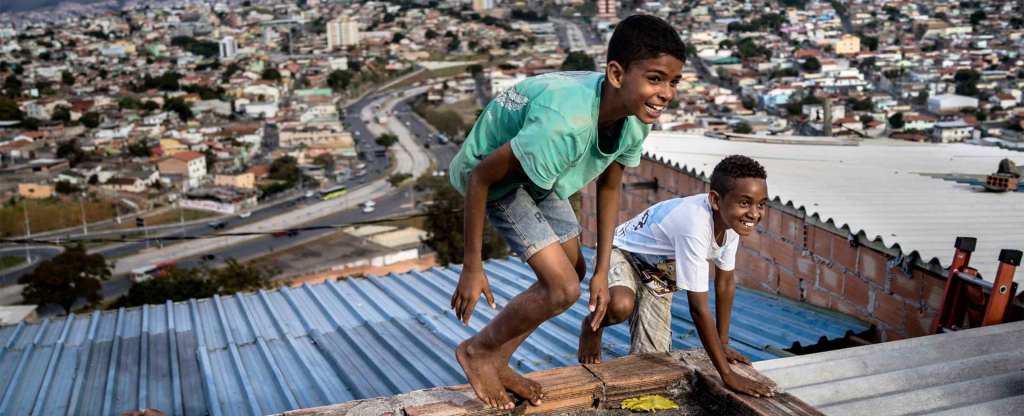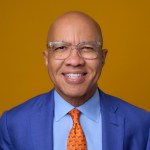
Last fall, when I wrote about my first year on the job, I asked you all to do something that would be very helpful to me: Tell me the truth.
That simple request drew more than 2,000 e-mails to my inbox. Some of them were profound and insightful. Others, lighthearted. But all of them were truthful. And I couldn’t be more grateful.
In reading and reflecting on each and every response, I have become more aware of the ways in which we can improve our institution, and serve our mission. Indeed, these last twenty-some months have been a transformative journey. Throughout, I have been challenged and humbled. In some cases, my beliefs were affirmed. In others, my assumptions were completely upended. In every instance, your constructive, and sometimes provocative, ideas have stirred, stimulated, and inspired.
Now it’s my turn to be candid with you, and to share what we’ve learned, where we’ve landed, and how my colleagues and I hope to lead the way forward.
What we’ve learned
Many have fairly pointed out that the culture of the Ford Foundation is unnecessarily hierarchical and bureaucratic, and our decision making slow and opaque.
Many more of you told me that, taken together, the Ford Foundation’s work has become too fragmented and diffuse—the whole is not greater than the sum of its parts. And in my view, it must be.
But the majority of the feedback I received was not about what we fund. It was about how we fund. Time and again, the organizations we support have said that our prioritizing project support, as opposed to general operating support, tends to stifle their work, forcing them to focus on incremental outputs rather than long-term organizational strategy and effectiveness.
In addition, while Ford has long worked around the world, we recognize that in a time of evolving global dynamics we must be better listeners and more avid learners. Our success as a philanthropy that is focused on human dignity for all people requires us to adapt our mission to a world in which the governments, institutions, and ideas of multiple nations are rising to global prominence and leadership.
And yet amid all that was said about how we must improve, I was repeatedly reminded of our deep and established strengths. I was reminded that, in many ways, the history of the foundation reflects the history of social progress over the past six decades—whether in the movement for civil rights in the United States, the fight against apartheid in South Africa, or the quest for gender equality around the globe today.
Throughout our history, the Ford Foundation’s approach has been characterized by a continuous emphasis on building institutions; investing in individuals, human capital, and leadership; and supporting new ideas. I think of these as our three I’s.
We have helped to launch institutions like Human Rights Watch, the Public Broadcasting Service, and South Africa’s Legal Resources Centre. We have stood behind thousands of extraordinary individuals, ranging from James Baldwin to Gloria Steinem, Muhammad Yunus to Ai-jen Poo. Nearly 50 Nobel laureates were Ford Foundation grantees—before they won their prizes. And we’ve invested in the ideas, insights, and research that have seeded pioneering movements like microfinance, financial services for the poor, and Internet rights.
While the specifics of our grants have evolved over the years, these three I’s—institutions, individuals, and ideas—have remained constant, reflecting our belief that human dignity is best served by those working closest to the problems and by a diverse community of actors that together can catalyze meaningful change.
The question before us now, therefore, is this: How do we identify the institutions, individuals, and ideas that will lead the next era of progress toward human dignity for all?
Addressing global inequality
I’ve written previously about the global trends we studied last year in our effort to understand the state of human dignity in the world today, trends such as the pervasiveness of short-term thinking in markets, the growth of extremism, the accumulating consequences of climate change, and the struggle of democracy to fulfill its promise.
Among these many trends, the one we returned to again and again was the growth of inequality in our world. Not just the economic disparities that have emerged in global debates these past few years but also inequality in politics and participation; in culture and creative expression; in education and economic opportunity; and in the prejudicial ways that institutions and systems marginalize low-income people, women, ethnic minorities, Indigenous peoples, and people of color.
We are talking about inequality in all its forms—in influence, access, agency, resources, and respect. We would argue that inequality, in one form or another, is coded into just about every one of our social ills. Research demonstrates that extreme inequality weakens economic growth and undermines the social cohesion of societies.
So how do we program to address inequality? After consulting with thought leaders and practitioners worldwide and reviewing the available research, we asked the teams in our 11 offices to offer a region-by-region analysis—based on evidence and their own experience—of the manifestations of inequality in each regional context, as well as an assessment of the underlying drivers of that inequality.
Remarkably, although manifestations varied by region, the assessment of underlying drivers was strikingly constant across the world. Broadly stated, we found five factors that consistently contribute to inequality:
- Cultural narratives that undermine fairness, tolerance and inclusion
- Unequal access to government decision-making and resources
- Persistent prejudice and discrimination against women as well as racial, ethnic and caste minorities
- Rules of the economy that magnify unequal opportunity and outcomes
- The failure to invest in and protect vital public goods, such as education and natural resources
Where we’re going
To address and respond to these drivers of inequality, we will be working in six program areas, very much reflective of the five drivers. They are:
- Civic Engagement and Government
- Creativity and Free Expression
- Gender, Ethnic, and Racial Justice
- Inclusive Economies
- Internet Freedom
- Youth Opportunity and Learning
These six thematic areas will not be silos, each unto itself. They are ingredients that each of our offices—depending on local context and the priorities set by local partners—will combine in creative ways to disrupt the drivers of inequality. We suspect that in many cases the most dynamic frontlines of social change will be found not within these six areas, but at the intersections where they connect. And our commitment to human rights and human dignity will be at the center of all of them.
In any case, our work in these areas will not attempt to cover the waterfront. These program areas may be stated broadly for now, but they will become more concrete and specific as we continue to refine our thinking and learn and adapt through our grantmaking.
Building healthy organizations
Our thought process has not dealt solely on the themes we intend to program around. We’ve also been rethinking how we support the institutions, individuals, and ideas that address inequality.
According to Nonprofit Finance Fund’s most recent State of the Nonprofit Sector Survey, the single greatest challenge facing organizations today is “achieving long-term financial sustainability.” So much of the feedback we’ve received echoes that sentiment.
In light of this, we have decided to invest in organizations as partners—and to give them the kind of trust, flexibility, and additional supports they need to do their best work. As incubators for both individuals and ideas, organizations are essential to developing a robust ecosystem of actors addressing inequality around the world.
For this reason, we are aiming to double our commitment to supporting key anchor organizations in our six program areas. Over the next five years—from 2016 to 2020—our trustees have authorized us to allocate up to $1 billion for a concerted effort to support stronger, more sustainable, and more durable organizations.
In some cases this may mean larger, longer-term grants that can be used more flexibly. In other cases it may mean support for wrap-around services that help an organization develop, adapt to change, or even merge with others. Whatever form it takes—depending on context and the needs of each organization—our aim is to ask not, “How do we make this grant successful?” but rather, “How do we help make this organization successful?”
In arriving at this point I have been inspired by my colleagues in the sector who are already undertaking important work to redress the lack of general-support funding in philanthropy: Larry Kramer at the William and Flora Hewlett Foundation, Chris Stone at the Open Society Foundations, Nancy Roob at the Edna McConnell Clark Foundation, Sigrid Rausing of the Rausing Trust, Herb Sandler at the Sandler Foundation, Carol Larson of the David and Lucile Packard Foundation, Kathleen Cravero-Kristoffersson at Oak Foundation, and Paul Shoemaker of Social Venture Partners. Their advice has been invaluable and offered in the spirit of authentic collaboration and partnership.
What this means
These changes are not without implications. Almost certainly, providing deeper, more intensive support will result in fewer grants, and, most likely, fewer grant recipients.
There are also internal implications, including how we structure teams and work together to think about our program areas, not as individual silos, but as an integrated system. This means that if your field of work is not explicitly mentioned among our programs, it does not necessarily signal an end to our support in that field. It means the way we program is evolving to reflect how problems are best defined and addressed in a changing world.
Alongside these changes, we will continue to evolve our internal culture to be more responsive and problem solving, ambitious but humble, bold and transparent.
In its entirety, I call our evolving strategy FordForward. It is our blueprint for the foundation’s future—how we envision a social justice philanthropy for the 21st century. And as a blueprint, it is far from complete. We still are refining each of the thematic areas, designing teams and regional programs that will reflect this larger thinking.
In the next few weeks you will be hearing more from us as we refine our thinking about how to address inequality most effectively in the diversity of contexts within which we work.
Which brings me back to you. While we are making some big changes at the foundation, what will not change is our commitment to supporting those closest to the problems, engaging collaboratively with every sector, and pursuing the cause of justice and dignity for all people, everywhere.
Today is not a new beginning. It is a next step in a quest begun eight decades ago. For over half that time, I have benefited from or been connected to the Ford Foundation. But I have never been more excited or optimistic about its future—about our ability to deliver on the promise of our mission and the purpose of our work. I look forward to continuing our journey forward, together.
